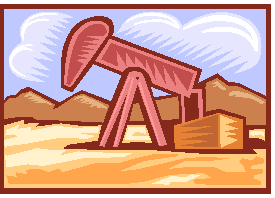The annual report on global energy released by the International Energy Agency (IEA, World Energy Outlook 2014, www.iea.org ) last November, was not a priori expressing optimism since it estimates that « the global energy system is in danger of falling short of the hopes and expectations placed upon it” (see also P.Papon, « IEA World Energy Outlook 2014 », Fututibles Vigie, Bibliography, December 2014, www.futuribles.com ). It was thus explicitly refering to the global energy system ability to facilitate a transition to limit global warming. However, forecasts are relatively optimistic about hydrocarbons exploitation. Thus, oil production will increase by nearly 15% between 2012 and 2040, with a strong growth in the non-OPEC countries until 2025 (particularly in the USA thanks to oil shale but also in Brazil). Gas production would jump by 50% with a strong contribution from « non-conventional » gas whose share would rise from 17% to 31%. These « forecasts », it must be observed, were made (during the summer) in a context where the price of a barrel of oil was close to $ 110, but since then, it has fallen by half. The reasons for this decline are known: Saudi Arabia has refused to reduce its production while oil demand has weakened as a result of the economic crisis in Western countries and the slowdown of the Chinese economy. Some experts explain this Saudi decision will undermine the growth of shale gas and oil production in the United States (hardly profitable with a barrel below $ 80). It is also possible that Saudi Arabia wants to undermine Iran oil revenues, and therefore its economy, in the decisive phase of negotiations with Iran on its nuclear program and bring this country to make concessions on the nuclear (the Saudi trying to avoid at all costs that Iran, his political rival in the Gulf region, acquires the atomic bomb). Many experts believe that the Saudi position is not « sustainable » because it needs oil revenues to balance its budget which will also be in deficit in 2015. The situation in other producing countries, OPEC members, like Nigeria and Algeria, is also not tenable.
Faced with this new situation, should we revise the « predictions » that have been made for the exploitation of shale gas and oil? The debate is mainly focused on the United States. In 2014, the US Agency which broadcasts all the energy information in USA (EIA, Energy Information Agency, cf. EIA Energy Outlook 2014, www.eia.gov ) forecasted that shale gas would provide 40% of the American gas production in 2020 and half in 2040. As far as the production of oil is concerned, the EIA announced in a statement, in early January 2015, that the recent oil price fall, would « slow down » the pace of the increase in shale oil production (approximately 2.5 million barrels / day in 2014 which is very much significant since this production was almost nil in 2005). In 2016, the total oil production, conventional and unconventional, would represent 9.5 million barrels / day, a small increase (2.2%) compared to the expected level in 2015. EIA maintains its forecast for 2015 with a production which would increase by 700 000 barrels/day compared to 2014 (+ 6%). In its reference scenario, the IEA estimated, in turn, that the world shale gas production would triple between 2012 and 2040 and represent (with coal gas) about a third of the world production. Regarding the USA, it felt that for technical and economic reasons the peak of shale gas production would be achieved before 2040, unless significant technical advances in operational techniques would occur which one must not exclude.
Another important issue is the reserves assessment which is still controversial. A team of twelve geologists of Texas University in Austin performed a rather drastic assessment of several gas deposits (M.Inman « The fracking fallacy », Nature, vol. 516, p. 28, 4 December 2014, www.nature.com ). Four deposits, exploited by the technique of hydraulic fracturing, provide most of the production of shale gas in the US, the most important being the Marcellus crossing West Virginia, Pennsylvania and New York State. The EIA had initially underestimated the breakthrough of shale gas tends today, according to some experts, being over-optimistic with its forecasts: the shale gas boom would continue until 2040, after a plateau between 2020 and 2040. According to Texas geologists Texas cited by Nature Magazine, this production would peak in 2020 and then decline. The difference between their predictions and those of the EIA is due to the « size » of the lands taken into account to assess the productivity of deposits. Geologists take into account 1 mile2 geographical blocks (2.6 km2), a thousand times smaller area than the EIA studies. This allows them to make a more detailed assessment of the production of the wells, which varies from one place to another, and to identify areas where there would be unproductive wells. Their model allows, in principle, to better understand the reality.  This tight reserve evaluation leads to halve the production of shale gas expected in 2030. The results of this study raise many questions, including within the team of geologists who have performed. (In a correspondence with Nature several of them, S. Holditch et al., S.W.Tinker, et al. claim that the exploitation of their model in the cited Nature paper is premature, Nature correspondence, vol. 517, p. 553, 29 January 2015, www.nature.com). They also claim that one cannot exclude a productivity improvement of some wells for technical reasons (the USA is today drilling 3-km-long horizontal wells and fracking rocks at 3,7 km depths). The evaluation of reserves is a critical issue which obviously arises in other countries, including Poland, which is supposed to have the largest reserves in Europe, a recent study (Advanced Resources International in Washington) having reduced by a third initial estimates of reserves, but the Polish national geological service disputes results.
This tight reserve evaluation leads to halve the production of shale gas expected in 2030. The results of this study raise many questions, including within the team of geologists who have performed. (In a correspondence with Nature several of them, S. Holditch et al., S.W.Tinker, et al. claim that the exploitation of their model in the cited Nature paper is premature, Nature correspondence, vol. 517, p. 553, 29 January 2015, www.nature.com). They also claim that one cannot exclude a productivity improvement of some wells for technical reasons (the USA is today drilling 3-km-long horizontal wells and fracking rocks at 3,7 km depths). The evaluation of reserves is a critical issue which obviously arises in other countries, including Poland, which is supposed to have the largest reserves in Europe, a recent study (Advanced Resources International in Washington) having reduced by a third initial estimates of reserves, but the Polish national geological service disputes results.
It is difficult to have a clear vision for the future of unconventional gas and oil, particularly shale gas. Geological studies can only encourage caution regarding the assessment of reserves (for example in France where there is no recent study as it has been claimed by several experts and member of the parliament). As far as the USA are concerned, most of studies do not call into question this energy resource potential that gives them an economic advantage that, even if temporary, is significant in times of low water economy. It remains unclear whether the sharp drop in oil prices will affect the exploitation of this resource. If it were lasting, which is far from certain, it would likely delay the development of new shale gas deposits (and possibly oil), particularly in Europe, the United Kingdom, Germany and Poland for example. Oil and shale gas may be promised a golden age but their future remains open.
